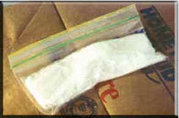MINNEAPOLIS -- Nearly Two-Thirds of Patients in Fibromyalgia Trial Have Completed the Protocol
Orphan Medical, Inc. (Nasdaq:ORPH) announced today that the Food and Drug Administration (FDA) has accepted for filing the Company's Supplemental New Drug Application (sNDA) for Xyrem(R) (sodium oxybate) oral solution. The FDA also notified the Company that the review deadline per the PDUFA regulation is November 18, 2005.
Xyrem is currently marketed as the first and only approved treatment for cataplexy, a sudden loss of muscle tone, a debilitating symptom of narcolepsy. The sNDA is expected to expand the Xyrem label to include the reduction of excessive daytime sleepiness (EDS) and the improvement in fragmented nighttime sleep in narcolepsy patients.
With approval of the sNDA, Xyrem would be the first medication approved to treat the primary symptoms of narcolepsy. Prior to approval of Xyrem, antidepressants were used off-label to treat cataplexy. EDS has been treated with stimulant medications, and disrupted nighttime sleep by sedative-hypnotic medications. The sNDA includes two Phase III(b) trials with EDS as the primary efficacy measure, as well as positive data relating to the treatment of other components of narcolepsy. The sNDA was the Company's first submission in the electronic common technical document (eCTD) format now required by the FDA.
The FDA is expected to grant orphan drug status to the new indication when approved under the sNDA. Medical formulations with orphan drug designation that are the first approved for a particular indication obtain orphan drug status which confers seven years of market exclusivity from the approval date in the United States. Orphan drugs are products that treat diseases affecting fewer than 200,000 U.S. patients. The FDA previously granted Xyrem orphan drug designation for narcolepsy, and upon its initial approval in 2002, Xyrem was awarded orphan drug status for cataplexy by the FDA.
Milestone Payment from UCB Pharma Limited
Orphan Medical also announced that it has received a milestone fee of $1 million from UCB Pharma tied to submission of the sNDA in the United States. In addition, UCB Pharma has notified the Company that responses to questions by the European Medicines Evaluation Agency (EMEA) have been submitted for the agency's review. The next milestone fee due from UCB Pharma is associated with regulatory approval of Xyrem in Europe, and is expected before the end of 2005.
Fibromyalgia Syndrome Trial Update
Nearly two-thirds of the 150 patients needed to satisfy the fibromyalgia proof-of-principle protocol have finished the trial. Orphan Medical expects to announce results of the trial in the third quarter of 2005. The protocol calls for patients to complete a three-month trial with an eight-week active treatment period that will assess the impact of Xyrem on the symptoms of fibromyalgia, including the sleep disturbance that typically accompanies fibromyalgia. After a washout period, patients are randomly assigned to blinded treatment consisting of two active Xyrem dosing arms or to a placebo arm. Twenty centers located throughout the United States are participating in the trial.
Fibromyalgia is a chronic condition that is estimated to affect over four million individuals in the United States and represents a market opportunity in excess of $1 billion per year. The disease is characterized by widespread muscle pain and stiffness, and affects women three times more often than men. Other symptoms include persistent fatigue, headaches, cognitive or memory impairment, morning stiffness and non-restorative sleep.
About Narcolepsy
Narcolepsy is a chronic, debilitating neurological disease whose primary symptoms are EDS, fragmented nighttime sleep and cataplexy. Cataplexy, a sudden loss of muscle tone, is usually triggered by strong emotions such as laughter, anger or surprise. All patients with narcolepsy suffer from EDS and an estimated 60 to 90 percent suffer from cataplexy. Patients often selectively isolate themselves from social interaction with others resulting in a worsening effect on a patient's quality of life. Narcolepsy afflicts 100,000 to 140,000 Americans, of which an estimated 50,000 receive some form of treatment for their symptoms. The estimated total addressable narcolepsy market based on Xyrem pricing exceeds $250 million.
About Orphan Medical, Inc.
Orphan Medical acquires, develops and markets pharmaceuticals of high medical value for inadequately treated and uncommon CNS diseases treated by specialist physicians. Xyrem has now been assessed as a treatment for the full range of narcolepsy symptoms including excessive daytime sleepiness. The Company is also conducting a trial to evaluate Xyrem as a treatment for symptoms of fibromyalgia syndrome. Orphan Medical's Internet Web site address is www.orphan.com
The information in this press release contains forward-looking statements within the meaning of the Private Securities Litigation Reform Act of 1995. In some cases, you can identify forward-looking statements by terminology such as "expects," "anticipates," "intends," "may," "should," "plans," "believes," "seeks," "estimates," "could," "would" or the negative of such terms or other comparable terminology. Such forward-looking statements are based upon current expectations and beliefs and involve numerous risks and uncertainties, both known and unknown, that could cause actual events or results to differ materially from these forward-looking statements. A number of factors could cause actual results to differ materially from the Company's assumptions and expectations. These are set forth in the cautionary statements included in Orphan Medical's most recent Form 10-Q or Form 10-K filed with the Securities and Exchange Commission. (These documents can be accessed through the Orphan Medical Web site at http://www.orphan.com). All forward-looking statements are qualified by, and should be considered in conjunction with, such cautionary statements.
COPYRIGHT 2005 Business Wire
COPYRIGHT 2005 Gale Group



